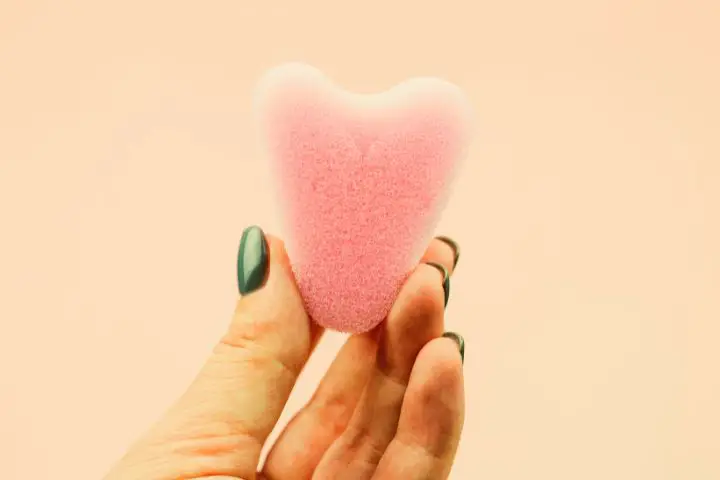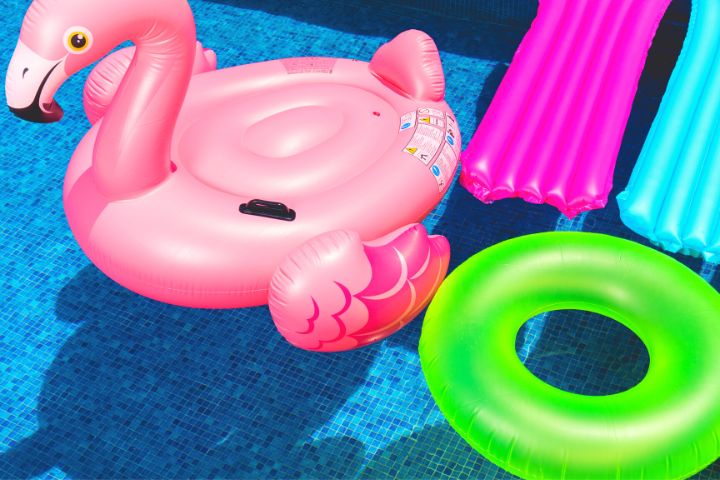Alternatives to Tampons for Swimming | 6 great options
Many women may fear the appearance of their period during the summer months. That’s when they want to be rocking their bikinis, not worrying about drips and leakage!
However, just because you’re on your period, doesn’t mean that you can’t go swimming. Since we are at it, let’s set the record straight. You can absolutely swim during your period!
Better yet, it doesn’t mean you have to use scratchy cotton tampons, either!
A few alternatives to tampons include menstrual cups, discs, and sponges as well as period swimwear! Let’s take a closer look.
The Benefits of Swimming During Your Period
Between the feeling of not being clean, the phobia of leaks, and the fear of a stained swimsuit, it’s no wonder so many people avoid swimming on their periods.
And yet, swimming during your period actually has a couple of benefits!
When you go swimming, the water helps to relieve menstrual pain (cramps, bloating, back pain, tense lumbar…). That’s because your muscles relax and you release tension when you’re in the water.
On top of that, swimming and exercising releases feel-good hormones. This can help you relax and work off some of the stress that comes with getting your period.

Alternatives to Tampons for Swimming
Tampons have long been women’s go-to for swimming on their period. However, they can cause some discomfort, which means they may not be ideal for everyone.
Whether you’re on your period on vacation or just enjoy swimming regularly, there are a few hygienic alternatives you can use. Let’s take a look at a few.
1. The Menstrual Cup
The menstrual cup is an internal period protection device that’s ideal for water and sports activities.
Most of the time, it’s made of medical silicone and has a funnel or cone shape. This helps it adhere to the vaginal walls, creating a seal that prevents leaks.
As long as the menstrual cup is well-positioned inside the vagina, you won’t be able to feel it. That makes it easy for you to move around while you’re in the water!
Just make sure that you empty the cup after getting out of the pool. You can’t keep menstrual cups in for more than six hours, either, as this puts you at risk of toxic shock syndrome.
Depending on the manufacturer, menstrual cups can be reused for up to ten years. In the long run, that means they’re not only good for your wallet, but also for the environment.
Plus, menstrual cups are available in different sizes so that each woman can find exactly the cup that suits her needs.

2. The Menstrual Swimsuit
If the idea of a menstrual cup doesn’t appeal, you can always opt for menstrual swimwear.
The menstrual swimsuit is a recent innovation in feminine hygiene. Inspired by menstrual panties, it allows you to bathe freely during your period.
The waterproof fabric prevents water from infiltrating and absorbs menstrual blood.
But, this type of protection is designed for light or medium flows. And, generally, it has to be accompanied by internal protection (menstrual cup or regular tampon) for heavier flows.
Still, if you have a light flow and already swear by period panties, this might be the right pick for you.
3. Menstrual Disc
A menstrual disc is a conventional menstrual cup, but with a special advantage.
While menstrual cups, sponges, or tampons should not be used during intercourse, the menstrual disc can be as they are placed further up!
Menstrual discs usually hold more blood than tampons, and can actually be used for up to twelve hours at a time. That makes them perfect for a trip to the beach!
4. Menstrual Sponge

A menstrual sponge is another good alternative to a tampon. Menstrual sponges are like softer, eco-friendly versions of tampons that help keep your flow at bay.
The sponges come from sustainable harvesting, are 100% biodegradable, and contain no harmful substances.No litter is left behind and no natural resources are exploited when they’re manufactured, either.
The sponges are inserted into the vagina like a tampon or a menstrual cup and adapt perfectly to the shape of the body. Plus, you can actually reuse them!
Once you’re done using them, just wash the sponge out and you can reuse it for as long as six months. That makes them a pretty good investment!
5. Cloth Pads
Last but not least are cloth pads. If you’d rather just wear a pad while swimming on your period, cloth pads are a reusable way for you to do so.
Cloth pads are made of a mix of fleece and microfibre fabric that not only feels pleasantly soft on the skin but is also highly absorbent. The pads are antibacterial and breathable, meaning that they don’t accumulate harmful bacteria.
If you’re worried about TSS, these are a good choice.
6. Wear Nothing at all!
Well, that may sound like a crazy idea at first, however, it can actually be an option – particularly, during low flow days. When we are in the water, blood does not come out of our body as easily and as intensely as it would outside of it – thanks to a lack of gravity!
This is not a complete ‘risk-free’ option – and, quite honestly, no option is! A leak can happen with any menstrual product, and no one should be ashamed of it.
Back to water, the lack of gravity in an aquatic environment means that blood can not easily ‘travel down‘ and it’s a pretty safe bet that there will be a lot less than usual.
But what about coming out of the water? Well, if you are quick enough to wear a menstrual product, you shouldn’t have a problem!
Final Thoughts
Even though it can feel uncomfortable, having your period and going swimming with peace of mind is definitely possible.
And, with this list of environmentally friendly alternatives to tampons, you can get in the water stress-free this summer.
Frequently Asked Questions

What Happens If You Swim Without Hygiene Products?
If you’ve already tried swimming without pads or tampons, you’ve probably noticed that while you’re in the water, the bleeding stops for a while.
There’s a scientific explanation for this—blood from the uterus descends into the vagina due to gravity, and the pressure of the water can reduce the flow.
However, the flow is just slower, not nonexistent, so coughing, sneezing, laughing, and other sudden movements can still cause leaks.
Can You Swim With a Tampon?
Absolutely! Tampons will stop the flow of blood so that you can swim comfortably without worrying about leaks.
How To Choose The Right Hygiene Products?
You need a hygiene product that will stop or absorb the flow in the water. The two best methods are tampons and menstrual cups. Just remember that tampons absorb water as well as blood, so you’ll need to change them after you get out of the water.






